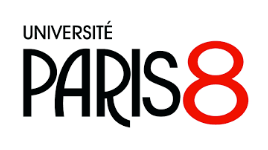17h30
Le séminaire aura lieu en hybride à Pouchet, en salle 124.
Lien ZOOM :
Sujet: Séminaire des doctorants
Heure: 17 janv. 2024 04:00 PM Paris
Rejoindre Zoom Réunion
https://univ-paris8.zoom.us/j/
ID de réunion: 921 3388 6328
Code secret: 013621
Doctorant : Alexander Sergienko, LLF
Titre : Alignment shift in Bartangi: parameterizing ergativity
This talk explores morphosyntactic alignment in Bartangi, an Eastern Iranian language. Earlier sources show tripartite alignment in the past tense, however my field data show the shift to full nominative-accusative alignment. As this development is reasonably common among Iranian languages, it is needed to develop a theory of ergative case which easily derives this shift. These talk explores several prominent approaches to ergative case assignment: DCT (Marantz 1991), (Baker 2015), ergative-as-inherent (Woolford 2006) and my own lexicon-driven approach.
Titre: Italian adaptation of the Treatment of Underlying Forms for object relative sentences: effectiveness and generalization patterns
Résumé:
The Treatment of Underlying Forms (TUF) is a linguistic approach for the rehabilitation of sentence deficits in agrammatic aphasia. It was developed in English for different types of sentences characterised by a syntactic movement and it was proven to be effective, with a specific generalization pattern – defined as Complexity Account of Treatment Efficacy (CATE) – from trained complex sentences to untrained simpler sentences characterised by the same type of syntactic movement.
In this study, we developed an Italian adaptation of the TUF for object relative sentences and we used a single-subject multiple baseline design with 5 participants with agrammatic aphasia in chronic phase to test improvement in production and comprehension. For the assessment we considered trained and untrained object relatives as target structure, object cleft sentences as structurally related control structure, passive and active sentences as unrelated control structures.
The findings show an overall improvement in both production and comprehension across participants and structures and in the standard tests. This improvement seems relatively stable at the follow-up assessment. No change was detected during the baseline assessment and the control period with no treatment.
Differently from the previous study in English, we found a relevant improvement in comprehension and, notably, almost no differences in the improvement between structurally related and unrelated control structures, providing a possible challenge for the CATE.
In the talk, I will discuss our findings in the light of the cross linguistic differences between English and Italian that could explain the unexpected results and we will outline observations for the clinical application of the TUF in Italian.



